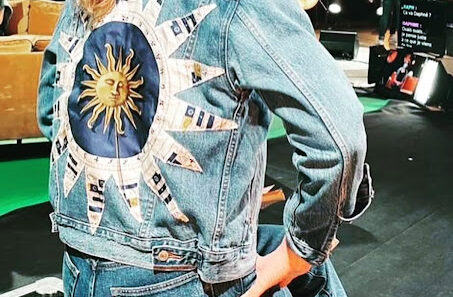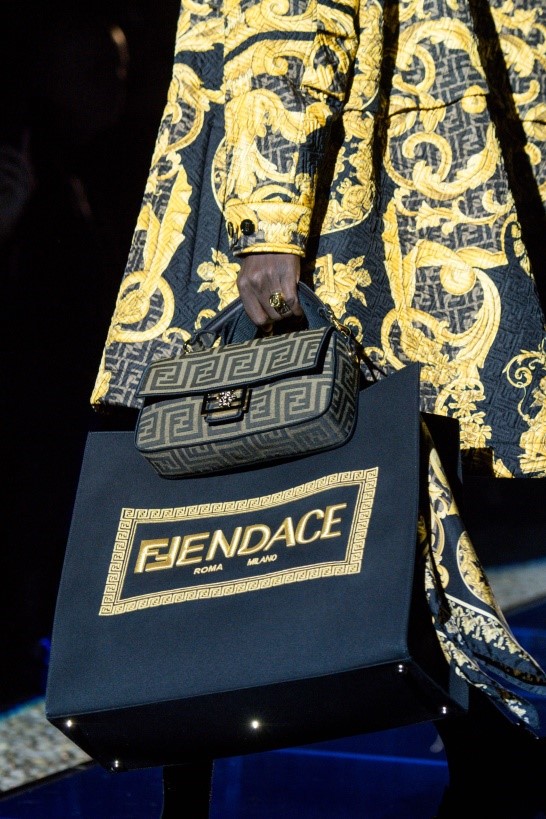This paper is titled ‘Protection of Fashion Designs under Berne Convention and TRIPs Agreement’. This paper strives to elucidate the relationship between fashion designs inextricably linked with two very significant and landmark treaties concerning Intellectual Property Rights (IPR) i.e., Berne Convention and TRIPs Agreement.
Fashion designs essentially come under the domain of Intellectual Property Rights, a detailed analysis of which shall be done further. Fashion law is an emerging field in the IPR realm which seeks protection for fashion designs whether industrial, textile or any other purposes as ‘intellectual property’ for it being an innovative output of the creator’s brain.
Berne Convention is one of the earliest international treaties signed that aims to safeguard the intellectual property rights. It has undergone various evolutionary stages which shall be explained in the paper. It’s connection with fashion designs and its vitality shall be catered to later in the paper.
TRIPs Agreement was signed in the aftermath of the formation of World Trade Organization (WTO) and as the name suggests revolves around the trade related aspects of IPR and guarantees copyright protection in such a way that’s beneficial to trade among member countries.
Thus, this paper explores the framework under which Berne Convention and TRIPs Agreement stipulate the protection of fashion designs for its member nations.
INTRODUCTION-
Fashion law as one of the components of Intellectual Property Rights has been a part of legal tenet since a long time. One can trace back the origin of protection of designs in general to the Berne Convention on an international stage. Before understanding about the aspects of the paper, here’s a brief information about intellectual property rights-
Intellectual Property Rights commonly referred to as IPR grant exclusive rights to the inventors or creators over their inventions or creations and restrict the use of their inventions and creations by third parties without authorization or permission. They form a part of the basic legal rights enjoyed by an individual which in Austin’s words are ‘privileges enjoyed as a result of a law in force’. IPR includes a wide array of types ranging from copyrights, trademarks to patents, grants, geographical indications (GI) and even fashion designs. As this paper is fashion design centric, lets take an example form one of the Indian case laws from this arena to entail that fashion designs are inclusive to IPR.[1]
In India, the protection of designs as intellectual property is regulated by The Designs Act, 2000. But Section 2d of the Designs Act while defining ‘designs’ explicitly excludes its trademark conversion. Hence, the scope of designs being equated to trademarks under the Trademarks Act, 1999 is limited and this very discrepancy makes it impractical to guarantee absolute trademark protection to fashion designs. But Micolube India Ltd vs Rakesh Kumar and Ors, the Delhi High Court held that a design covered under the Designs Act not only remains exclusive to that legislation but also gets secured under the Trademarks Act provided it’s registered as one.
Now, moving on towards the purpose of the paper here is what encompasses the objective, scope and significance of the study.
OBJECTIVE OF THE STUDY
The paper strives to explain the link between the protection of fashion designs, Berne Convention and TRIPs agreement. It enunciates what the Berne Convention and TRIPs Agreement seek to achieve in protecting IPR in general and fashion designs in particular.
SCOPE OF THE STUDY
To understand whether fashion designs are protected under Berne Convention and TRIPs Agreement.
SIGNIFICANCE OF THE STUDY
The paper determines whether foreign nations (UK and the United States in particular) and India have implemented and inherited the Berne Convention and TRIPs Agreement in their domestic legislations.
PROTECTION OF FASHION DESIGNS- AN ANALYSIS
WHAT ARE FASHION DESIGNS-
Fashion design can be categorically defined as the art of applying aesthetics, creativity and natural beauty to clothing and its accessories. It is heavily influenced by prevailing culture, trends and colloquial style. Fashion design scientifically is the outline of clothing, jewelry, handbags brands which is later applied in the manufacturing of those products. A fashion designer is a person with expertise in designing fashion garments and fashion products by applying specialized innovation in his/her designs. Fashion designers attempt to design clothes which are functional as well as aesthetically pleasing. They consider who is likely to wear a garment and the situations in which it will be worn, and they work within a wide range of materials, colors, patterns and styles. Fashion designing is a field requiring great amount of standardized skills, proficiency and virtuosity in doing the work and the designs are an output of originality, creativity and expression of the designer.[2]
HOW ARE THEY INCLUDED IN IPR-
As explained earlier, fashion designing is an art and the scope, opportunities and avenues available to fashion designers has developed into a blooming fashion industry. We see the same fashion industry with celebrity designers like Ralph Lauren, Giorgio Armani in yesteryear United States, Manish Malhotra, Falguni Shane Peacock in contemporary India designing clothing brands which are widely popular generating whooping revenue. The financial success of the fashion industry also opens a potential risk of misuse and abuse by third parties for fraudulent and counterfeit purposes. Basically, fashion designs of other creators are pirated and forged by perpetrators and advertised, sold and used to be unjustly enriched by the same. Some of these perpetrators include business rivals, fishy websites, hackers etc. Thus, it defeats the purpose of indigenousness of the fashion designers and violates the exclusive right they possess over their designs. This necessitates basic safety, security and protection for fashion designs under intellectual property to prevent purported exploitation equivalent to that of copyrights, trademarks, patents, grants and geographical indications.
FASHION LAW VIZ A VIZ BERNE CONVENTION AND TRIPs AGREEMENT
As this paper considers fashion designs in tandem with Berne Convention and TRIPs Agreement, let me express an observation that neither Berne nor TRIPs Agreement provide for a consolidated, inclusive and integrated framework for the protection of fashion designs. Furthermore, these treaties mandate member Unions to synthesize their domestic legislations. All these claims will be analyzed and scrutinized in detail to clarify the scenario on the protection of fashion designs.
BERNE CONVENTION
The Berne Convention for the Protection of Literary and Artistic Works was an international assembly in the Swiss city of Berne held in 1886. The Convention was adopted in 1886 and came into force in 1887. It is deposited with the World Intellectual Property Organization (WIPO) and is administered by the same. The fundamental condition for the enforcement of the Convention was 3 months after exchange of ratifications. As of 2022, 181 countries are signatories to this landmark IPR treaty. The Berne Convention evolved through various stages since its inception which are enlisted as follows-[3]
- Signed in 1886 at Berne
- Effective since 1887
- Additional Act of Paris, 1897
- Berlin Revision of 1910
- Additional Protocol of Berne, 1915
- Rome Revision of 1931
- Brussels Revision of 1951
- Stockholm Revision of 1967
- Paris Revision of 1971[4]
The latest entrant in the list of ratifiers of the Berne Convention is the United States which signed in 1989.
WHAT IT SEEKS TO ACHIEVE
The main objective of Berne Convention is to extend protection and sanctity intellectual property rights considering it to be of utmost importance as a developing legal field requiring progress, remedies and resolutions. Subject to certain allowed reservations, limitations or exceptions, the following are among the rights acknowledged as exclusive rights of authorization:
- the right to translate,
- the right to make adaptations and arrangements of the work,
- the right to perform in public dramatic, dramatico-musical and musical works,
- the right to recite literary works in public,
- the right to communicate to the public the performance of such works,
- the right to broadcast (with the possibility that a Contracting State may provide for a mere right to equitable remuneration instead of a right of authorization),
- the right to make reproductions in any manner or form (with the possibility that a Contracting State may permit, in certain special cases, reproduction without authorization, provided that the reproduction does not conflict with the normal exploitation of the work and does not unreasonably prejudice the legitimate interests of the author; and the possibility that a Contracting State may provide, in the case of sound recordings of musical works, for a right to equitable remuneration),
- the right to use the work as a basis for an audiovisual work, and the right to reproduce, distribute, perform in public or communicate to the public that audiovisual work.[5]
The vital provisions of the Berne Convention in general are explained below-
- Article 2(1)- It defines the expression ‘literary and artistic works’ as being inclusive to books, pamphlets, lectures, addresses, sermons, musical and cinematographic works, works of drawing, painting, architecture and sculpture and photographic works. It highlights that the usage of the words ‘such as’ indicates that the list of protected works is burgeoning without any limitations.
- Article 2(2)- It stipulates that only those works that’ve have been fixed in any material form i.e., published, recorded or expressed shall be eligible for protection as intellectual property.
- Article 2(3)- It also expands the purview of protected works to derivative works that’ve been influenced and conceptualized from an original work by clearly distinguishing it with ‘copied work’ which involves plagiarism. But derivative work has an element of invention.
- Article 2(7)- This is perhaps the most clinical and somewhat contentious provision as far as fashion designs are concerned. It gives discretion to the Unions to decide their own definitions of applied arts and photographic works in protecting this kind of work. The ambiguity regarding the same shall be discussed later in the paper.
- Article 3(1)- This forms the crux of the Berne Convention which aims to assure and ensure that the protection from copyright infringement of published literary and artistic works beyond the national boundaries and also in other member Unions. Thus, it dilutes the geographical criterion for the protection of intellectual property by applying it even to the habitual residents of other signatory Unions in Article 3(2) insofar as those works are ‘fixed materially’ consensually as per Article 3(3).[6]
ARE FASHION DESIGNS PROTECTED UNDER BERNE CONVENTION
Although the Convention suggests that use of the phrases ‘such as’ and ‘no limitations’ means that nothing is exclusionary of the ‘intellectual property’ domain, the explicit absence of the word ‘fashion designs’, its definition and the liberty given to Unions to apply Article 2(7) accordingly exposes the inadequate framework for the inclusion of fashion designs under ‘protected works’. So, it can be stated that Berne Convention does not specifically recognize fashion designs within its directions for member Unions. Unlike industrial designs mentioned directly in Article 2(7), fashion designs find no special mention in the Berne Convention.
TRIPs AGREEMENT
TRIPs Agreement is an international legal treaty signed by all the members of the World Trade Organization (WTO) in 1995 at Morocco. The Agreement propounds a set of rules and regulations for the member nations to adhere to the basic principles according protection to intellectual property rights. TRIPs introduces and integrates intellectual property into multilateral trading system among the member nations. It directs WTO members to provide copyright rights to trademarks, patents, geographical indications, industrial designs and textile designs but not fashion designs. The ultimate objective of the Agreement is to ensure that by enforcement of IPR don’t themselves become barriers of international trade.[7]
WHAT IT SEEKS TO ACHIEVE
The TRIPs Agreement also specifies a separate enforcement mechanism and dispute resolution procedure in the IPR field. The Agreement directs all of its signatories to comply with Articles 1-21 of the Berne Convention according to Article 9(1) which have been inherited in the treaty. Here are some important provisions which form the Part II of the TRIPs Agreement-
- Article 9(2)- It formulates that copyright protection shall be applicable to ‘expressions’ and not to ideas in any non-material form subscribing to Article 2(2) of the Berne Convention that entails works ‘fixed in material form’.
- Article 25(1)- It mandates protection to independently created industrial designs that are new and original. It authorizes the member nations to decide on the originality of the industrial designs by considering the variety between two similar ones.
- Article 25(2)- It states that textile designs shall be protected by members and by securing them in regard to cost, examination or publication, reasonably guarding their opportunity to seek and obtain such protection. It offers discretion to the member nations to further integrate these obligations through domestic copyright legislations and design laws.
- Article 26- It enshrines the protection procedure to be abided by pertaining to industrial designs considering the commercial significance of these designs.[8]
ARE FASHION DESIGNS PROTECTED UNDER TRIPs AGREEMENT
There are many loopholes and discrepancies in the TRIPs Agreement that results in an even dodgy, non-credible and poor system for the inclusion of fashion designs in intellectual property protection. It has been highlighted earlier that how fashion designs are classified for being an exquisitely intellectual creation. Hence, it’s all the more unfortunate that a relatively modern and new international legal treaty that’s more oriented and conclusive than the Berne Convention is less effective and efficient than the older treaty in protecting fashion designs. The Berne Convention at least mentions about protection of applied arts which ambiguously implies to fashion designs, the TRIPs Agreement being so much scientific patent-centric, is silent about fashion designs as a part of IPR. Industrial designs and even textile designs (focusses on the woven, knitted or printed pattern on clothing accessories) find a mention in Article 25 which talks about preservation of designs. But no provision for fashion designs is seen in the TRIPs Agreement the effect of which in certain domestic legislations shall be discussed later.
HOW FOREIGN COUNTRIES HAVE IMPLEMENTED BERNE AND TRIPs VIZ A VIZ FASHION DESIGNS
This part of the paper after determining the status of fashion designs in Berne Convention and the TRIPs Agreement, analyses the domestic legislations of two foreign countries the UK and Australia respectively to discover how they’ve superseded those international treaties and negated their limitations in conferring protection to fashion designs as intellectual property. As far as UK is concerned, it is the Copyrights Designs and Patent Act, 1988 that has exceeded the ambit of Berne to establish a rights-based foundation for the implementation of IPR. And in Australia, the Designs Act, 2003 governs the enforcement of design rights as against copyright violators to guarantee fashion designs legitimate protection.
COPYRIGHTS DESIGNS AND PATENT ACT, 1988
This Act which was passed by the British Parliament in 1988 provides for an exhaustive framework for the protection of property rights by inheriting Article 3(1) of the Berne Convention in approving the protection of IPR beyond its national boundaries. And in accepting the sanctity of intellectual property of foreign nationals in their country. But the Act overrides the Berne Convention by particularly including a design rights clause which serves as a blanket framework for all types of designs (even fashion designs). Section 213 of the Act defines design as ‘the shape or configuration (whether internal or external) of the whole or part of an article.’ It specifically excludes from design ‘a method or principle of construction’ and ‘an outline which is dependent on another article or product’. It highlights that design rights do not subsist unless and until the design has been recorded in a design document or an article/product has been made out of it by referring to Article 2(2) of the Berne Convention. Also, it excludes all the designs from recognition before the inception of this Act. So, the legislation with clear and definite draftsmanship makes it easier to protect fashion designs.[9]
THE DESIGNS ACT, 2003
This Act was passed by the Australian Parliament in 2003 focusses only on designs with respect to the rights, ownership, registration and application aspects of it. According to Section 7 the Act, design is the ‘visual feature’ of the product including its shape, configuration, pattern and ornamentation. The Act is more liberal and non-restrictive as it does not necessarily direct that the ‘visual feature’ must serve a functional purpose. This Act is known for its differentiation between the configurational and functional aspects of a design and it fully acknowledges a design even in its configurational form that contradicts Article 2(2) of the Berne Convention and Article 9(2) of the TRIPs Agreement. The Act also recognizes exclusive rights of the registered owners of designs and their power to use their designs in any way they want. The Act also enumerates a certain code of conduct and procedural measures to be adopted by the Design Registrar in dealing with the design applications. So, the Act is a major step ahead of the two treaties explained above in terms of recognition, practicality and application of fashion designs.[10]
HAS INDIA IMPLEMENTED BERNE CONVENTION AND TRIPs AGREEMENT VIZ A VIZ FASHION DESIGNS
DESIGNS ACT, 2000
After considering the legislative scenario in the United Kingdom and Australia pertaining to Berne Convention, TRIPs Agreement and fashion designs, lets understand the situation in India as far as intellectual property security for fashion designs is concerned. In India, the Designs Act, 2000 regulates the registration and further protection of designs. It defines design similar to what the Australian Act encompasses. The Act is totally based on the registration of designs which is an extensive process mentioning the rights of the designers and duties of the officials. It is a narrowly tailored legislation that is silent on the configuration vs function aspect but provides registration of a design after a thorough inspection by the Registrar. The dispute resolution is according to the Civil Procedure Code, 1908. One of the loopholes in the Act is that a pre-requisite for registration application is public morality and order which vests with the State the clarification of these aspects. But if one scrutinizes it in tandem with the Berne Convention and TRIPs Agreement, it directly protects fashion designs as intellectual property unlike the treaties.[11]
CONCLUSION
In conclusion, I’d like to say that fashion designs is very much a part of intellectual property owing to its novelty of its work. As the design appeals to the eyes and increases the marketability of any product it is necessary to protect it from copycats and to do that modern governance entails presence of authoritative international IPR treaties that influence member nations to incorporate them. There are various advantages and disadvantages attached to it too so the inventor must keep the points in mind and follow the procedures for the protection of his article. But this paper systematically concludes that the international treaties of Berne Convention and TRIPs Agreement fail miserably in extending protection to fashion designs as exclusive intellectual property. Moreover, domestic legislations of countries like the UK, Australia and India have an unambiguous and comparatively robust operative mechanism to deter infringers from stealing fashion designs; an outright violation of IPR.[12]
[1] https://en.wikipedia.org/wiki/Intellectual_property
[2] https://en.wikipedia.org/wiki/Fashion_design
[3] https://en.wikipedia.org/wiki/Berne_Convention
[4] https://www.wipo.int/treaties/en/ip/berne/
[5] https://en.wikipedia.org/wiki/Berne_Convention
[6] https://www.wipo.int/treaties/en/ip/berne/
[7] https://en.wikipedia.org/wiki/TRIPS_Agreement
[8] https://www.wto.org/english/docs_e/legal_e/27-trips.pdf
[9] https://www.legislation.gov.uk/ukpga/1988/48/section/213#commentary-key-e0609b91486b8cc070c10c297748dd84
[10] http://www8.austlii.edu.au/cgi-bin/viewdb/au/legis/cth/consol_act/da200391/
[11] https://www.indiacode.nic.in/bitstream/123456789/1917/1/200016.pdf
[12] https://blog.ipleaders.in/a-critical-analysis-of-design-protection-in-india/
Author: ANISH PADHYE
















